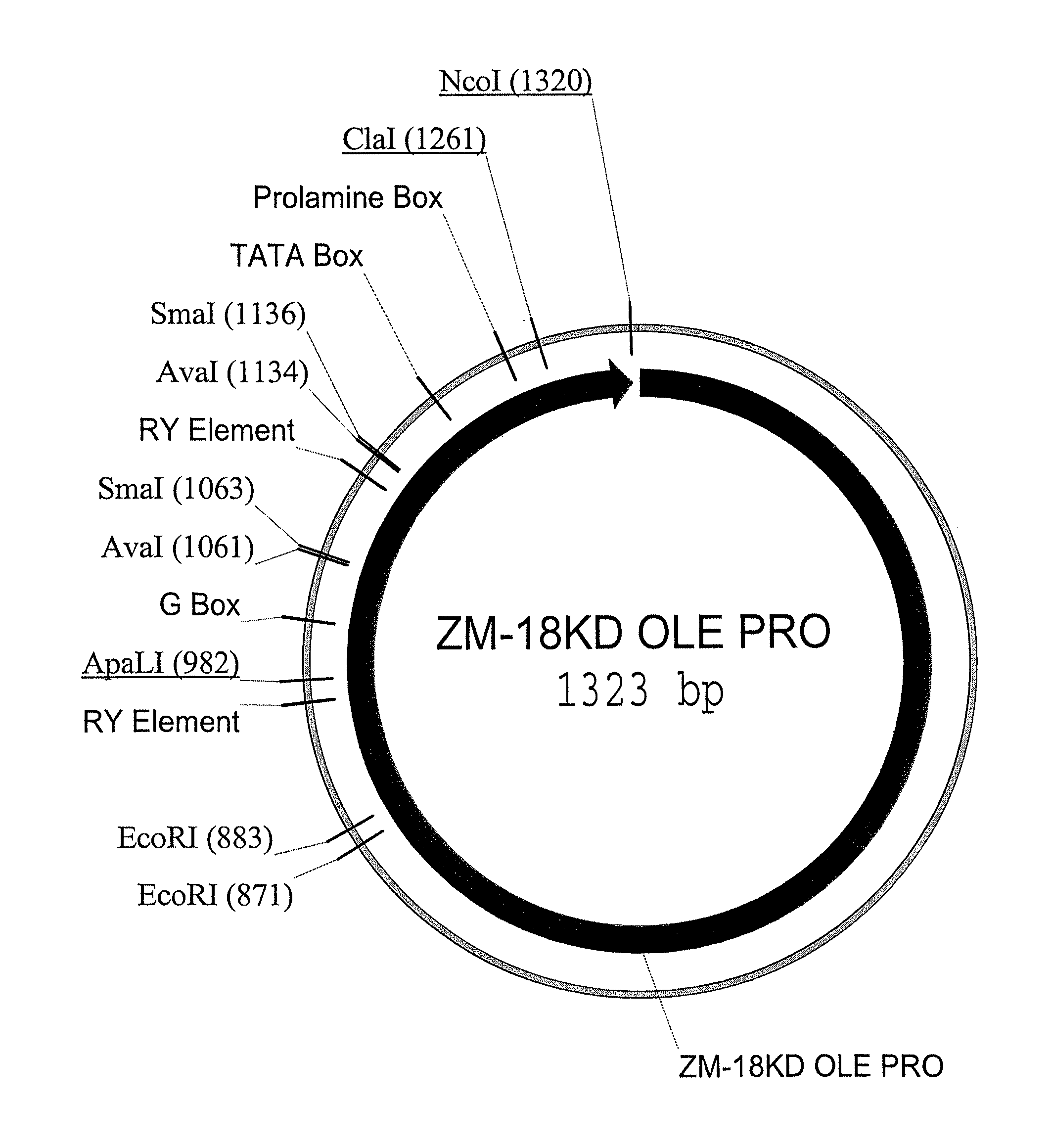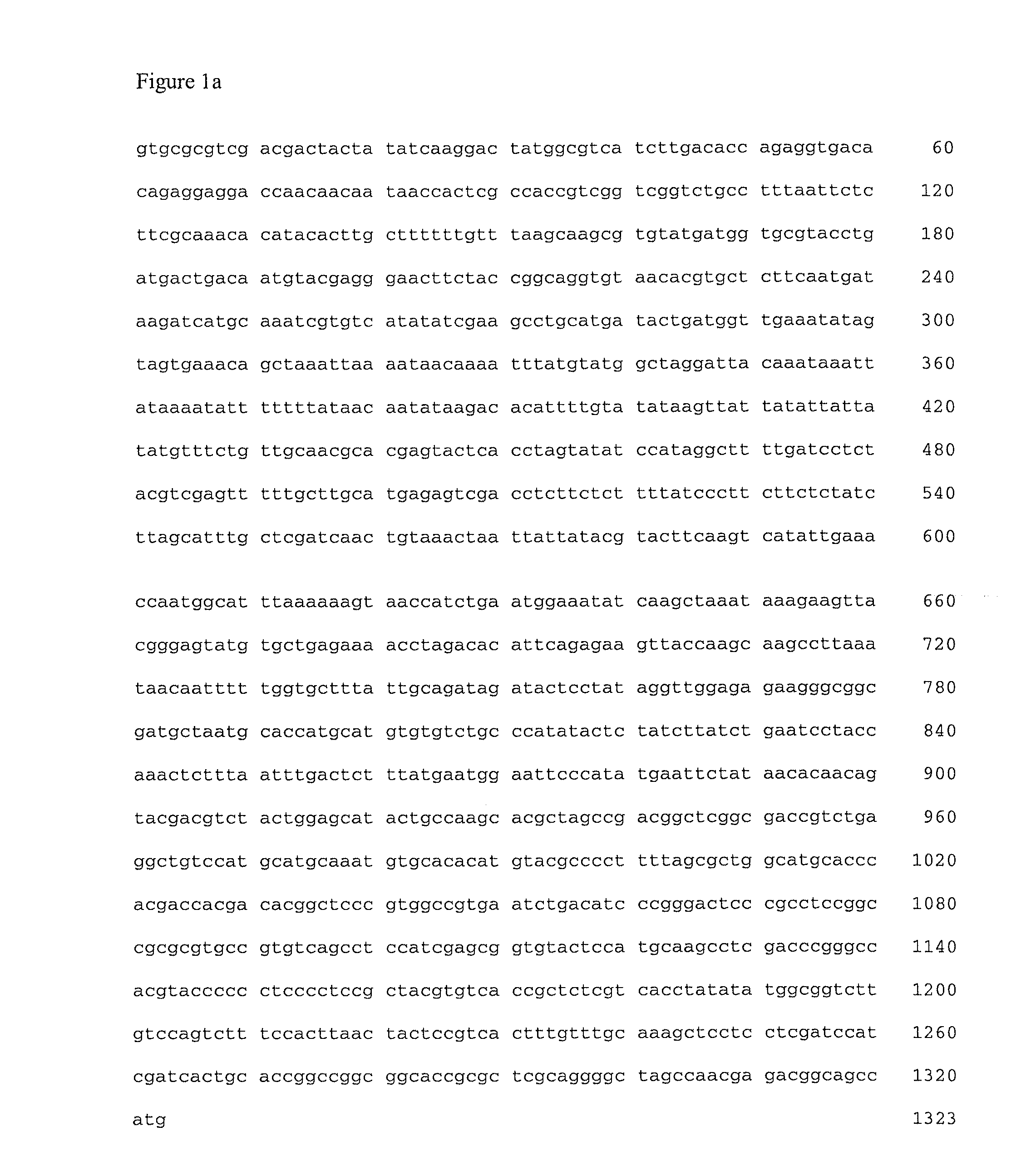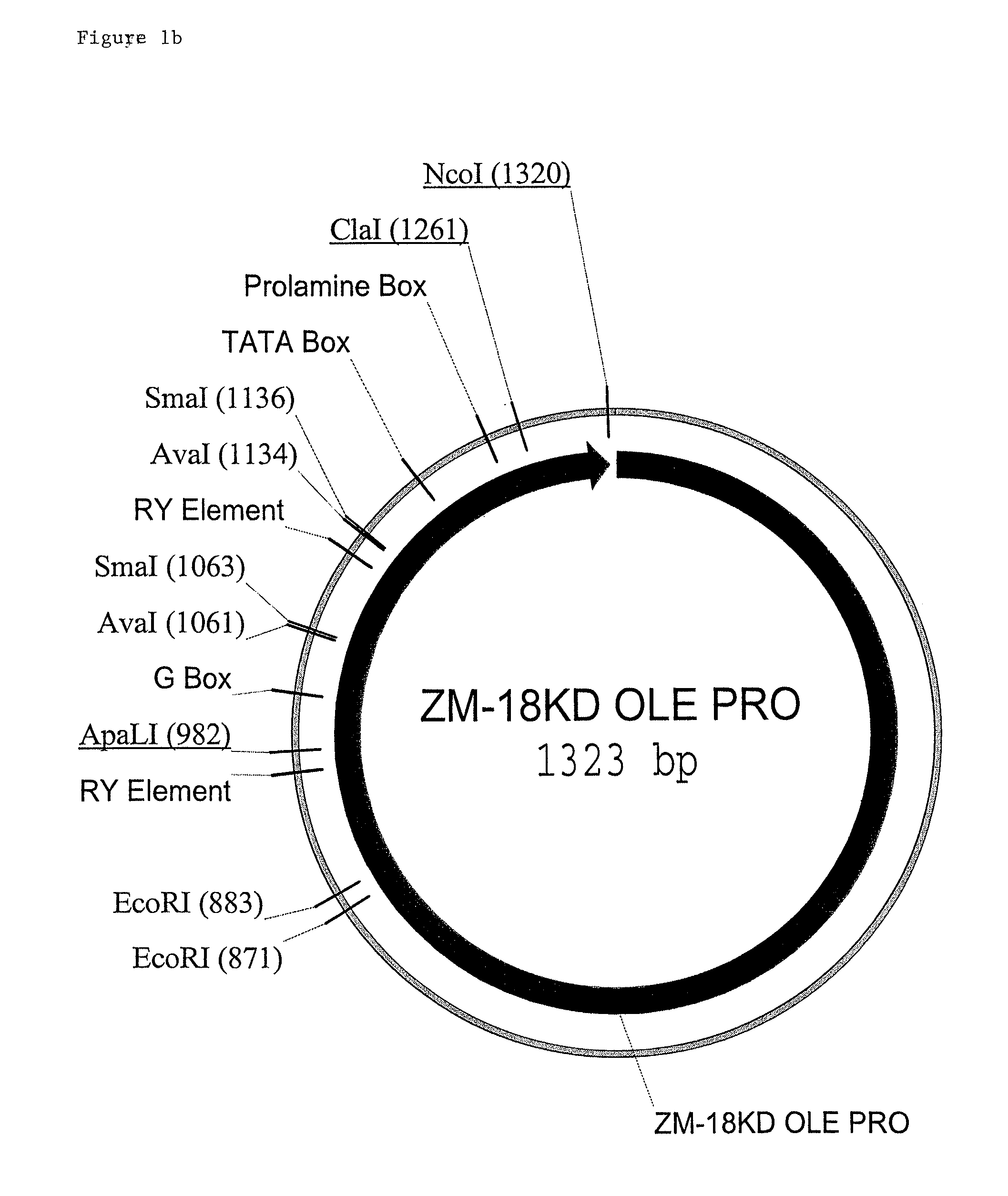Maize 18kd oleosin seed-preferred regulatory element
a technology of oleosin and maize 18kd, applied in the field of plant molecular biology, can solve problems such as the influence of one or more genes on the expression of genes
- Summary
- Abstract
- Description
- Claims
- Application Information
AI Technical Summary
Benefits of technology
Problems solved by technology
Method used
Image
Examples
example 1
Prediction of Expression Via Lynx MPSS
[0139]Lynx™ gene expression profiling technology was used to identify the maize 18 KD OLE coding region as a candidate for promoter isolation. Massively parallel signature sequencing (MPSS, see Brenner et al, Nature Biotechnology 18:630-634, 2000) indicated expression in various tissues at about 20 DAP (days after pollination) in seed, peaking at about 30 k ppm. Results are summarized in FIG. 2. MPSS data showed no significant expression of maize 18 KD OLE (18 kilodalton oleosin) in flowering or vegetative tissue.
example 2
Expression Data Using Promoter Sequences
[0140]A promoter::ZS-YELLOW::terminator fusion construct is prepared as set out below. ZS-YELLOW is a scorable marker (Matz, M. V. et al 91999) Nature Biotech. 17:969-973, Bevis B. J. et al. (2002) Nature Biotech 20:83-87, Haas, J. et al. (1996) Curr. Biol. 6:315-324). All vectors were constructed using standard molecular biology techniques (Sambrook et al., supra). The fusion construct is constructed as follows: maize 18 KD OLE PRO (SEQ ID NO: 1): ZS-YELLOW:PINII TERM.
[0141]Successful subcloning is confirmed by restriction analysis. Transformation and expression is confirmed as discussed infra.
example 3
Confirmation of Expression
[0142]The construct described above was inserted into the genome of various zea mays plants through techniques well-known in the art. Seed was collected at various numbers of days after pollination (DAP). The collected seed was bisected and examined under a microscope with the appropriate filter to detect the expression of the ZS-YELLOW marker. Photographs were taken of seeds at 14 DAP, 15 DAP, and 20 DAP, and are reported herein as FIGS. 3A-3D. AS can been seen the photographs demonstrate preferred expression of the ZS-YELLOW marker in the embryo and aleurone.
[0143]The article “a” and “an” are used herein to refer to one or more than one (i.e., to at least one) of the grammatical object of the article. By way of example, “an element” means one or more element.
[0144]All publications and patent applications mentioned in the specification are indicative of the level of those skilled in the art to which this invention pertains. All publications and patent appl...
PUM
| Property | Measurement | Unit |
|---|---|---|
| temperature | aaaaa | aaaaa |
| temperature | aaaaa | aaaaa |
| pH | aaaaa | aaaaa |
Abstract
Description
Claims
Application Information
 Login to View More
Login to View More - R&D
- Intellectual Property
- Life Sciences
- Materials
- Tech Scout
- Unparalleled Data Quality
- Higher Quality Content
- 60% Fewer Hallucinations
Browse by: Latest US Patents, China's latest patents, Technical Efficacy Thesaurus, Application Domain, Technology Topic, Popular Technical Reports.
© 2025 PatSnap. All rights reserved.Legal|Privacy policy|Modern Slavery Act Transparency Statement|Sitemap|About US| Contact US: help@patsnap.com



